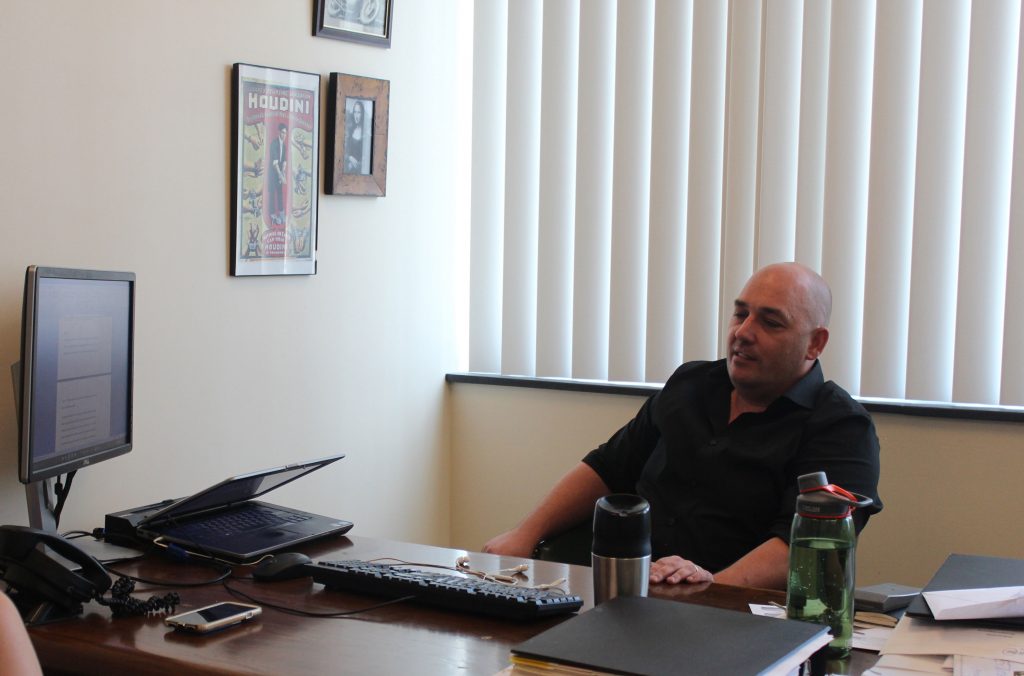
Reapplying sunscreen over and over at the beach could be a thing of the past, thanks to the development of a new DNA film by Binghamton University researchers.
The film, developed by Guy German, assistant professor of biomedical engineering at BU, becomes increasingly protective against UV light the longer the film is exposed to it. German and his team of researchers have been working on the relationship between UV light and DNA since 2013 and published a paper about it in Scientific Reports, an online scientific journal, last month.
“UV light goes into skin and can damage DNA molecules, which is called lesion-forming,” German said. “We want to stop this, so why not do the simplest thing possible — let’s put more DNA on it.”
To test the effects of UV light on DNA, German placed a thin layer of the film on glass squares and shined a UV light on it. His team concluded that the DNA absorbed more UV as its exposure time lengthened.
“So if you translate that into an application, it’s a sunscreen that gets better the longer you stay in the sun,” German said.
While German and his co-researchers have concluded that the DNA absorbs more UV light the longer it’s exposed, they have not yet determined the exact reason why.
Amber Doiron, co-author of the paper and assistant professor of biomedical engineering at BU, said that one cause of this could be chemical changes in DNA molecules.
German also said that the reason could be greater hyperchromicity, or the increased absorbency of a material, when lesions are formed in the DNA. He is also looking into using the film as a wound healer that would be beneficial because of its transparency.
“Say you’re in a nonantiseptic environment and you have wound covering and don’t want to take it off and look at it,” he said. “So if you had a wound cover that was completely transparent, you would see how the wound was progressing.”
According to German, another beneficial aspect of the film is its potential to absorb water.
“These films are hygroscopic, which means they absorb water in the atmosphere just like a moisturizer does, so they stay wet,” German said. “It’s well-known that moist wound-healing conditions are better than dry, so we think that they can promote the rate at which wounds will heal.”
German and his co-researchers are considering commercializing the DNA films into sunscreen or a wound healer.
He also mentioned that he finds this work important not only in terms of the DNA film’s possible uses but also because of the science behind it.
“I think it’s important for probably different reasons to how it’s been reported,” German said. “I think the application side of it was really highlighted, but to me I’m blown away that you’ve got this structure that interacts with light and absorbs it or reflects it and does a number of things with it and you’ve also got the reverse, the light actually influences the structure.”


